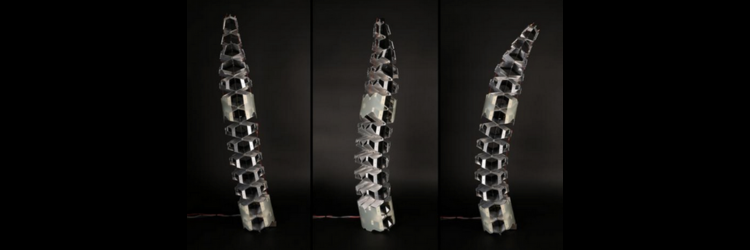Strong metal lattices are lighter than cork and have customizable mechanical properties. MIT researchers used kirigami, the art of Japanese paper cutting and folding, to develop ultra-strong, lightweight materials with tunable mechanical properties, including stiffness and flexibility. These materials could be used in airplanes, automobiles, or spacecraft.
Using kirigami allowed MIT researchers to manufacture a type of high-performance architected material known as a plate lattice on a much larger scale than scientists have previously been able to achieve by additive fabrication. They developed a modular construction process in which many smaller components are formed, folded, and assembled into 3D shapes, fabricating structures and robots that can morph and hold their shape.
Lattices are often used as cores for a composite material known as a sandwich structure. Plate lattices are cellular structures made from three-dimensional intersections of plates rather than beams. They are even stronger and stiffer than truss lattices, but their complex shape makes them challenging to fabricate using common techniques like 3D printing. The researchers modified a typical origami crease pattern, known as a Miura-ori pattern, so the sharp points of the corrugated structure are transformed into facets. The facets, like those on a diamond, provide flat surfaces to which the plates can be attached more easily, with bolts or rivets.
The way the researchers design, fold, and cut the pattern enables them to tune certain mechanical properties, such as stiffness, strength, and flexural modulus. They encode this information and the 3D shape into a creasing map that is used to create these kirigami corrugations. Since the flexibility of the structure can be controlled, these corrugations could be used in robots or other dynamic applications with parts that move, twist, and bend.
The researchers introduced a modular assembly process to craft larger structures like robots. They mass produce smaller crease patterns and assemble them into 3D structures. Smaller structures have fewer creases, which simplifies the manufacturing process.

